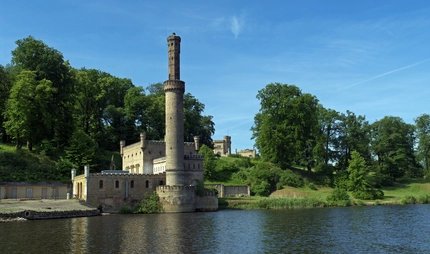
Berlin Modernism Housing Estates
UNESCO World Heritage in Berlin
In 2008, six representative modernist housing estates in Berlin were inscribed on the UNESCO World Heritage List. The estates, which were built between 1913 and 1934, are outstanding examples of 1920s residential architecture in Berlin.
In the 1920s, Berlin was one of the most exciting metropolises in the world. Considered liberal and cosmopolitan, the city was a centre for modern art and culture and stood for the rapid development of industry. And... the city was bursting at the seams!
"Greater Berlin" comes into being
In 1920, many surrounding towns and communities were merged to form "Greater Berlin", which meant that new land was also available for development. To solve the problem of the great housing shortage, new residential districts were built all over Berlin. Six of these were declared UNESCO World Heritage Sites of Outstanding and Universal Value in Berlin in 2008. Their design sought to address the general longing for light, air and green space, elementary needs that emerged in many metropolises in Europe in the course of industrialisation.
Longing for light and air
Berlin in the 19th century: The rise to a cosmopolitan city was accompanied by massive housing problems. Factory workers lived in cramped dark flats, often without windows, in tenement barracks with several backyards. Changes in the law at the end of the 19th century, the founding of building cooperatives and finally the emergence of Greater Berlin made possible social-reform housing construction, the realisation of new social housing culture and lifestyles with English garden cities as models. Light and air were the declared goals. In the simple aesthetics of the Bauhaus, the complexes were designed without ornamentation and flourishes, albeit with colourful patterns.
The abrupt end of social-reform housing construction
In 1933, democratic housing construction came to a sudden end: the National Socialists' housing construction was based on a completely different, anti-modern concept. Fortunately, the existing buildings were hardly changed and were mostly spared from the bombs of the Second World War. Today, the flats and houses of the modernist housing estates in Berlin are still sought-after objects on the property market.
The Modernism Housing Estates
Six Modernist buildings have been included on the UNESCO list:
- Gartenstadt Falkenberg (Treptow), 1913-15 built by Bruno Taut, open spaces by Ludwig Lesser
- Schillerpark-Siedlung (Wedding), 1924-30 built by Bruno Taut and Franz Hoffmann, partly reconstructed in 1951 by Max Taut, extension 1954-59 by Hans Hoffmann
- Großsiedlung Britz / Hufeisensiedlung (Neukölln), 1925-31 built by Bruno Taut and Martin Wagner, Freiflächen von Leberecht Migge
- Wohnstadt Carl Legien (Prenzlauer Berg), 1928-30 built by Bruno Taut and Franz Hillinger
- Weiße Stadt (Reinickendorf), 1929-31 built by Bruno Ahrends, Wilhelm Büning and Otto Rudolf Salvisberg, housing estate green by Ludwig Lesser
- Großsiedlung Siemensstadt (Charlottenburg and Spandau), 1929-31 built by Otto Bartning, Fred Forbat, Walter Gropius, Hugo Häring, Paul Rudolf Henning, Hans Scharoun, open spaces by Leberecht Migge
Visit the individual settlements with our app ABOUT BERLIN, the digital city guide for Berlin history.
Download now for free for iPhone and Android:


There's many stories to tell. ABOUT BERLIN.



